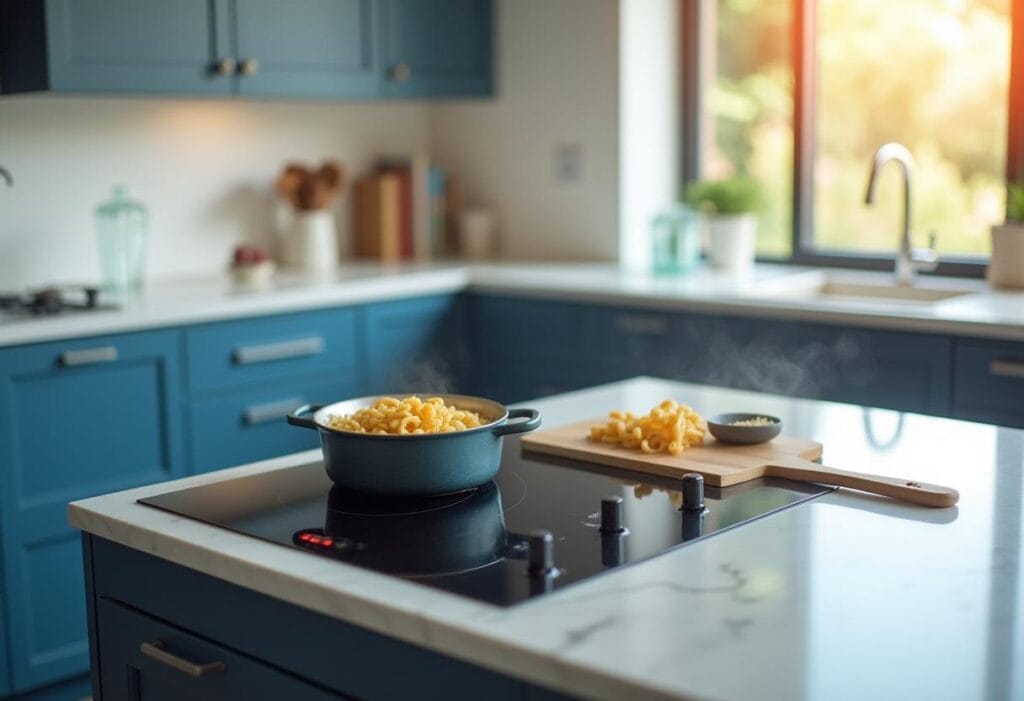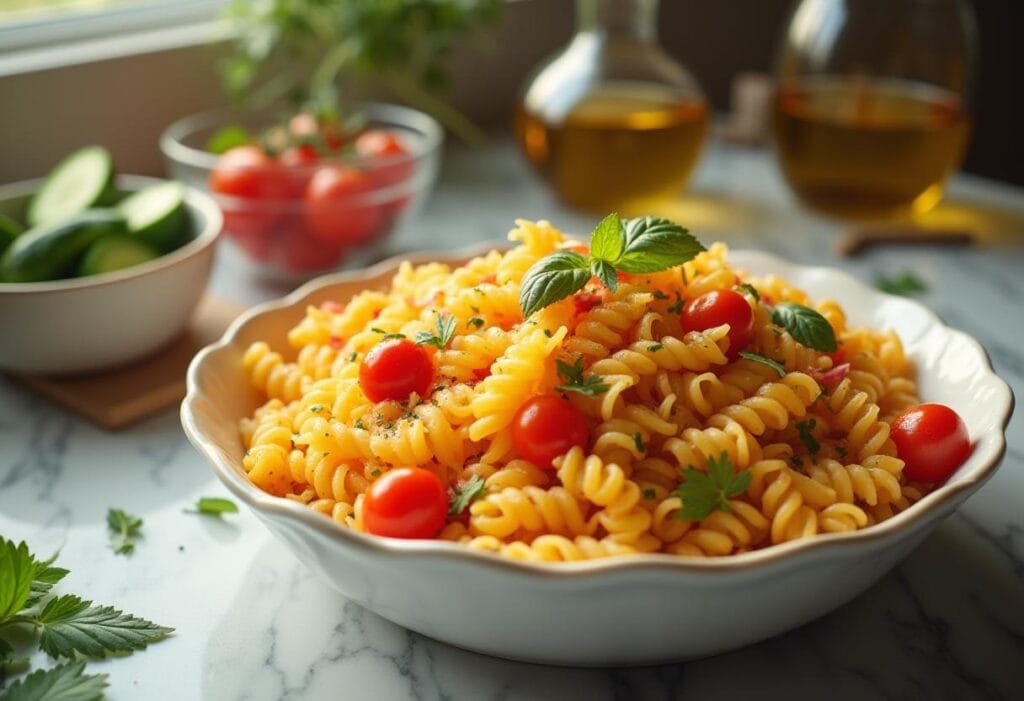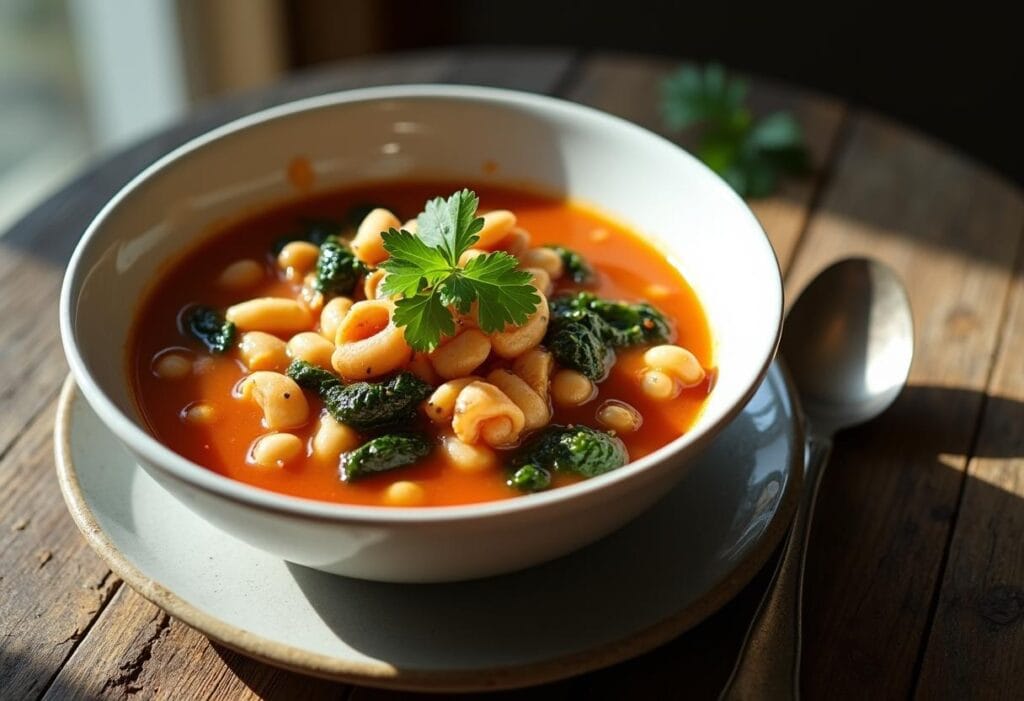Introduction: Understanding Ditalini Pasta’s Health Benefits
Is ditalini pasta healthy? This popular, small, tubular pasta is a versatile ingredient found in soups, salads, and casseroles. While loved for its convenience and ability to complement various dishes, many wonder if it fits into a healthy diet. If you’re curious about alternative pasta options, learn what ditalini pasta is similar to
While loved for its convenience and ability to complement various dishes, many wonder if it fits into a healthy diet. In this article, we’ll explore the nutritional profile of ditalini, its benefits, potential drawbacks, and tips for making it part of a balanced meal plan.
In this article, we’ll explore the nutritional aspects of ditalini pasta, its benefits, potential drawbacks, and tips to make it part of a balanced diet. Whether you’re a pasta lover or health-conscious eater, understanding ditalini’s role in your meals is key.
What is Ditalini Pasta Made Of?
Ditalini pasta is traditionally made from durum wheat semolina, a type of hard wheat high in protein. The ingredients are simple—durum wheat and water—making it a natural, minimally processed food. Whole-wheat and gluten-free versions are also available for those with specific dietary needs.
Why People Love Ditalini Pasta
- Versatility: Perfect for soups, salads, and side dishes.
- Quick Cooking Time: Ready in 8-10 minutes, making it convenient for busy schedules.
- Neutral Flavor: Complements a variety of ingredients and seasonings.
Nutritional Breakdown of Ditalini Pasta
Understanding the nutritional profile helps answer the question: is ditalini pasta healthy? Let’s examine how it fits into a balanced diet
Calories and Macronutrients
A typical serving size of ditalini pasta (about 2 ounces dry, or 1 cup cooked) provides:
- Calories: 200-220
- Carbohydrates: 40-45g
- Protein: 7-8g
- Fat: 1g or less
Ditalini is primarily a source of carbohydrates, which provide energy for the body. It’s low in fat and contains moderate protein.
Vitamins and Minerals Found in Ditalini
Ditalini pasta contains small amounts of essential vitamins and minerals, including:
- B Vitamins (Thiamine, Riboflavin, Niacin): Support energy metabolism and brain function.
- Iron: Important for oxygen transport in the blood.
- Selenium: Aids in antioxidant function and immune health.
Comparing Regular vs. Whole-Wheat Ditalini
When considering is ditalini pasta healthy, compare these options:
- Regular Ditalini: Made from refined flour, lower in fiber but softer in texture and more neutral in taste
- Whole-Wheat Ditalini: Higher in fiber, which aids digestion and promotes satiety. Offers a nuttier flavor and slightly firmer texture
Health Benefits: Is Ditalini Pasta Health?
Energy Boost from Carbohydrates
Ditalini is an excellent source of complex carbohydrates, which are the body’s primary energy source. Unlike simple carbs, complex carbs digest more slowly, providing sustained energy.
Supports a Balanced Diet
When paired with nutrient-dense foods like vegetables, lean proteins, and healthy fats, ditalini pasta becomes part of a well-rounded meal. It complements a variety of ingredients, making it easy to create balanced dishes.
Easy to Pair with Nutrient-Dense Foods
Ditalini’s small shape allows it to absorb flavors and pair seamlessly with vegetables, beans, and lean proteins. For example:
- Add spinach, kale, or zucchini to boost fiber and vitamins.
- Combine with chicken, turkey, or tofu for a protein-rich meal.
Potential Drawbacks of Ditalini Pasta
While ditalini pasta can be part of a healthy diet, there are a few potential drawbacks to keep in mind, especially when it’s not consumed in moderation or paired with nutrient-dense foods.
High Carb Content and Blood Sugar
Ditalini pasta is high in carbohydrates, which can lead to a spike in blood sugar levels if consumed in large quantities or without balancing it with proteins and fats.
Tip to Offset: Pair ditalini with high-fiber vegetables and lean proteins to slow down carbohydrate absorption and prevent blood sugar spikes.
Gluten Sensitivity and Celiac Disease
Traditional ditalini pasta contains gluten, which can cause digestive issues for people with gluten sensitivity or celiac disease.
Solution: Opt for gluten-free ditalini made from alternatives like rice, quinoa, or chickpea flour. These options provide similar taste and texture while being suitable for gluten-free diets.
Overeating Risks and Portion Control
Pasta dishes, including ditalini, are easy to overeat because of their delicious taste and filling texture. Large portions can lead to consuming excess calories.
How to Manage Portions:
- Measure servings: Stick to 2 ounces of dry pasta (about 1 cup cooked).
- Add more low-calorie ingredients like vegetables to bulk up the meal without overloading on pasta.
Tips for Making Ditalini Pasta Healthier: Addressing ‘Is Ditalini Pasta Healthy?
Incorporating these tips can help maximize the health benefits of ditalini pasta while minimizing its drawbacks. For perfectly cooked pasta, find out how long to boil ditalini.

Choosing Whole-Wheat or Gluten-Free Options
- Whole-Wheat Ditalini: Provides more fiber and nutrients compared to regular refined versions.
- Gluten-Free Ditalini: Suitable for those with gluten intolerance, offering options made from rice, quinoa, or lentils.
Pairing with Vegetables and Lean Proteins
- Vegetables: Add zucchini, spinach, bell peppers, or tomatoes for a vitamin boost.
- Proteins: Include chicken, turkey, shrimp, or chickpeas to balance macronutrients.
- Healthy Fats: Drizzle olive oil or sprinkle avocado slices for added flavor and healthy fats.
Portion Control for Balanced Meals
- Use smaller plates to visually control portion sizes.
- Fill half your plate with vegetables, one-quarter with pasta, and one-quarter with protein.
- Avoid adding excessive cheese or heavy cream sauces, which can increase calorie content.
Healthy Ditalini Pasta Recipes
Here are a few easy recipes that answer the question ‘is ditalini pasta healthy?’ by showing how to incorporate this pasta into nutritious meals

Ditalini Minestrone Soup
Ingredients:
- 1 cup ditalini pasta
- 1 zucchini, diced
- 1 carrot, sliced
- 1 cup spinach leaves
- 1 can diced tomatoes
- 4 cups vegetable broth
Instructions:
- Sauté the carrot and zucchini in olive oil until tender.
- Add the tomatoes and broth, bringing it to a boil.
- Stir in the ditalini and simmer until pasta is tender.
- Add spinach during the last few minutes of cooking and serve warm.

Mediterranean Ditalini Salad
Ingredients:
- 2 cups cooked ditalini pasta
- ½ cup diced cucumbers
- ½ cup cherry tomatoes, halved
- ¼ cup crumbled feta cheese
- 2 tbsp olive oil
- 1 tbsp lemon juice
Instructions:
- Combine the cooked pasta with cucumbers, cherry tomatoes, and feta cheese.
- Drizzle with olive oil and lemon juice, tossing gently to combine.
- Serve chilled as a side dish or light meal.
Ditalini with Kale and Garlic Oil
Ingredients:
- 1 cup ditalini pasta
- 1 bunch kale, chopped
- 2 garlic cloves, minced
- 2 tbsp olive oil
- ¼ cup grated Parmesan cheese
Instructions:
- Cook the ditalini pasta and set aside.
- Sauté the garlic in olive oil, then add the kale and cook until wilted.
- Toss the pasta with the kale mixture, sprinkle with Parmesan, and serve.
FAQs About Ditalini Pasta’s Healthiness
Here are answers to common questions about ditalini pasta and its role in a healthy diet.
Is Ditalini Pasta Healthy for Weight Loss?
Ditalini pasta can be included in a weight-loss plan if eaten in moderation and paired with nutrient-dense ingredients.
- Benefits for Weight Loss: Whole-wheat ditalini contains fiber, which helps you feel full and satisfied.
- Tips: Stick to portion sizes (1 cup cooked) and bulk up meals with vegetables and lean proteins to reduce calorie density.
Does Whole-Wheat Ditalini Taste Different?
Yes, whole-wheat ditalini has a nuttier flavor and slightly firmer texture compared to regular ditalini. While it may take some getting used to, the added fiber and nutrients make it a healthier choice.
- Tip for Transitioning: Mix regular and whole-wheat ditalini initially to adjust your palate.
What’s the Healthiest Way to Cook Ditalini?
The healthiest way to prepare ditalini is by:
- Boiling it in Broth: Adds flavor without extra calories.
- Pairing it with Vegetables: Increases the vitamin and mineral content of your meal.
- Using Light Sauces: Opt for olive oil, tomato-based sauces, or lemon dressings instead of cream-based sauces.
Can Ditalini Pasta Be Part of a Low-Glycemic Diet?
Ditalini pasta made from whole wheat or other high-fiber grains has a lower glycemic index (GI) compared to refined pasta. This means it has a slower impact on blood sugar levels, making it more suitable for individuals managing diabetes or looking for stable energy levels.
How Do I Store Ditalini for Meal Prep?
Cooked ditalini pasta stores well for meal prep.
- Toss it with olive oil to prevent sticking.
- Store in an airtight container in the refrigerator for up to 4 days.
- Reheat with a splash of water or broth to restore its texture.
Is ditalini pasta healthy compared to other pasta shapes?
While all pasta shapes have similar nutritional profiles, ditalini’s small size makes it perfect for portion control and easily combining with vegetables and proteins, potentially making it a healthier choice
More Healthy Recipes Featuring Ditalini
Adding a variety of recipes helps ensure ditalini can fit into different meal plans and occasions.
Ditalini and Lentil Stew
Ingredients:
- 1 cup ditalini pasta
- 1 cup green or brown lentils
- 1 carrot, diced
- 1 celery stalk, chopped
- 1 onion, diced
- 1 can diced tomatoes
- 4 cups vegetable broth
- Spices: bay leaf, thyme, salt, and pepper
Instructions:
- Cook the lentils in vegetable broth until tender. Set aside.
- Sauté onion, carrot, and celery in olive oil until softened.
- Add the diced tomatoes, broth, lentils, and spices. Simmer for 15 minutes.
- Stir in the ditalini and cook until al dente. Serve warm.
Ditalini Primavera
Ingredients:
- 2 cups ditalini pasta
- 1 cup mixed seasonal vegetables (asparagus, peas, cherry tomatoes)
- 2 garlic cloves, minced
- 2 tbsp olive oil
- Zest of 1 lemon
- Grated Parmesan cheese
Instructions:
- Cook the ditalini pasta and set aside.
- Sauté garlic in olive oil, then add the seasonal vegetables and cook until tender.
- Toss the pasta with the vegetables, lemon zest, and Parmesan cheese.
Spicy Ditalini with Chickpeas
Ingredients:
- 1 ½ cups cooked ditalini pasta
- 1 can chickpeas, drained
- 1 cup diced tomatoes
- 1 tsp red pepper flakes
- 2 tbsp olive oil
- Fresh parsley
Instructions:
- Heat olive oil in a pan and sauté the chickpeas until slightly crispy.
- Add diced tomatoes and red pepper flakes, cooking for 5-7 minutes.
- Toss in the ditalini pasta and stir until coated. Garnish with fresh parsley.
Ditalini with Spinach and White Beans
Ingredients:
- 1 ½ cups cooked ditalini pasta
- 1 can (15 oz) white beans, drained and rinsed
- 2 cups fresh spinach leaves
- 3 garlic cloves, minced
- 2 tbsp olive oil
- Zest and juice of 1 lemon
- Salt and pepper
Instructions:
- Heat olive oil in a large skillet over medium heat. Add the garlic and sauté until fragrant.
- Stir in the white beans and cook for 3-4 minutes.
- Add the spinach, cooking until wilted.
- Toss in the cooked ditalini pasta, lemon zest, and juice. Season with salt and pepper. Serve warm.
Health Tip: This recipe is high in fiber and plant-based protein, making it perfect for a light yet filling meal.
Ditalini with Roasted Vegetables
Ingredients:
- 2 cups ditalini pasta
- 1 zucchini, diced
- 1 bell pepper, diced
- 1 cup cherry tomatoes, halved
- 1 red onion, sliced
- 3 tbsp olive oil
- 1 tsp dried oregano
- Salt and pepper
Instructions:
- Preheat the oven to 400°F (200°C). Toss the vegetables with olive oil, oregano, salt, and pepper.
- Spread the vegetables on a baking sheet and roast for 20-25 minutes until tender.
- Cook the ditalini pasta and combine it with the roasted vegetables. Drizzle with additional olive oil and serve warm or chilled.
Why It’s Healthy: Roasting enhances the flavor of the vegetables without adding unhealthy fats, making this dish nutrient-packed and low in calories.
Ditalini Pasta Stir-Fry
Ingredients:
- 1 cup cooked ditalini pasta
- 1 cup broccoli florets
- 1 cup snap peas
- 1 carrot, julienned
- 2 tbsp soy sauce
- 1 tsp sesame oil
- 1 tsp minced ginger
- 1 tbsp sesame seeds
Instructions:
- Heat sesame oil in a wok or skillet. Add the ginger and sauté until aromatic.
- Toss in the broccoli, snap peas, and carrots, cooking until tender-crisp.
- Add the ditalini pasta and soy sauce, stirring until combined. Sprinkle with sesame seeds before serving.
Why It’s Unique: This recipe brings an Asian-inspired twist to ditalini pasta while maintaining its health benefits with vegetables and light seasoning.
Advanced Tips for Cooking Ditalini
Toast Ditalini Before Boiling
Why: Toasting ditalini in a dry skillet enhances its nutty flavor and adds depth to dishes.
How:
- Heat a dry skillet over medium heat.
- Toast the dry pasta for 2-3 minutes, stirring frequently.
- Boil as usual and use in recipes.
Experiment with Plant-Based Additions
- Legumes: Add lentils, chickpeas, or black beans for a protein and fiber boost.
- Plant-Based Sauces: Blend cashews or tofu with herbs for creamy, dairy-free sauces.
Extended Conclusion: Is Ditalini Pasta Healthy? The Final Verdict
Ditalini pasta is a versatile and nutritious addition to any diet when eaten in moderation and paired with nutrient-rich ingredients. Its small, tubular shape makes it ideal for a wide range of dishes, from hearty soups to fresh salads and comforting casseroles.
Whether you choose regular or whole-wheat ditalini, its ability to absorb flavors and pair seamlessly with vegetables, proteins, and healthy fats makes it a practical and delicious choice. By keeping portion sizes in check and balancing meals with a variety of nutrients, ditalini pasta can support both your health goals and culinary creativity.
Ultimately, ditalini pasta is as healthy as the ingredients you pair it with. By making mindful choices, you can enjoy this beloved pasta shape as part of a balanced, satisfying diet.

